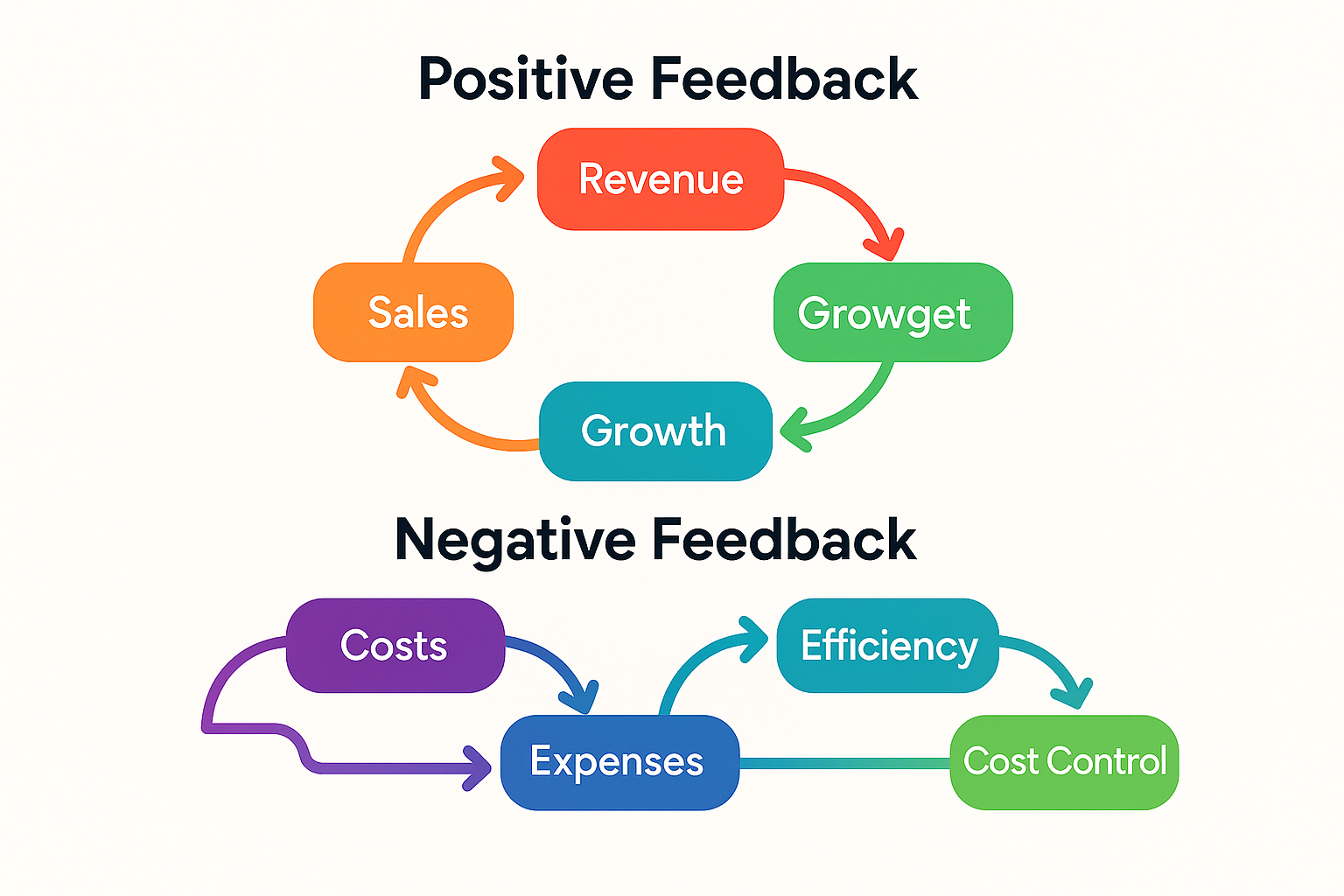Summary
“A feedback loop acts as a powerful processing mechanism by enabling a system to self-adjust and evolve by using its own outputs as inputs for future iterations. This continuous cycle of observation, action, and evaluation allows systems to improve performance over time by correcting errors, reinforcing successful outcomes, and adapting to new information. Feedback loops are crucial in various fields, from Artificial Intelligence (AI) and software development to business process optimization.”
Let’s break this down:
1. Positive Feedback Loops
- Definition: A process where subsequent responses amplify an initial change. The output reinforces the input, creating a self-reinforcing cycle.
- Examples:
- Economics: Asset bubble-rising prices attract more buyers, pushing prices even higher.
- Biology: Blood clotting—once clotting starts, it accelerates until the wound is sealed.
- Consequences:
- Rapid growth or escalation.
- It can lead to instability or runaway effects if unchecked.
- Unintended Consequences:
- Boom-and-bust cycles: In markets, positive feedback can cause bubbles that eventually burst.
- Environmental tipping points: Melting ice reduces albedo, accelerating warming.
2. Negative Feedback Loops
- Definition: A process where an initial change triggers mechanisms that counteract the change, promoting stability and equilibrium.
- Examples:
- Thermostat system: Temperature rises → AC turns on → Temperature drops.
- Biology: Blood sugar regulation via insulin and glucagon.
- Consequences:
- Stability and homeostasis.
- Resistance to change (can be good or bad).
- Unintended Consequences:
- Overcorrection: Can cause oscillations if the system reacts too strongly or too slowly.
- Complacency: In social systems, strong negative feedback can discourage innovation.
3. Key Insights
- Complex Systems: Many real-world systems combine both positive and negative feedback loops, creating nonlinear dynamics.
- Time Delays: Delays in feedback can lead to oscillations or instability (e.g., the supply chain bullwhip effect).
- Policy Implications: Interventions often fail because they overlook feedback dynamics, resulting in unintended consequences.
Applying feedback loops to business can reveal why companies succeed, fail, or experience volatility. Here’s a structured breakdown:
4. Positive Feedback Loops in Business
- Definition: Actions that amplify growth or decline.
- Examples:
- Network Effects: More users → more value → attracts more users (e.g., social media platforms).
- Brand Reputation: Good reviews → more customers → more reviews → stronger reputation.
- Sales Momentum: Increased sales → higher visibility → more sales.
- Consequences:
- Rapid scaling and market dominance.
- Risk of bubbles or overexpansion.
- Unintended Consequences:
- Overconfidence: Companies may overinvest during periods of rapid growth.
- Market Saturation: Growth slows abruptly, leading to layoffs or collapse.
5. Negative Feedback Loops in Business
- Definition: Mechanisms that stabilize or correct deviations.
- Examples:
- Inventory Control: High stock → reduce production → stabilize inventory.
- Pricing Adjustments: High demand → raise prices → demand moderates.
- Quality Control: Customer complaints → process improvements → fewer complaints.
- Consequences:
- Operational stability and cost control.
- Resistance to innovation occurs when feedback discourages risk-taking.
- Unintended Consequences:
- Overcorrection: Cutting costs too aggressively can harm quality.
- Slow Adaptation: An excessive focus on stability can cause firms to miss market shifts.
6. Combined Feedback Dynamics
- Businesses often have interacting loops:
- Example: A startup experiences positive feedback from viral growth but negative feedback from cash burn, forcing a pivot.
- Time Delays: Delayed feedback (e.g., customer churn data) can cause oscillations, such as the “bullwhip effect,” in supply chains.
7. Strategic Implications
- Monitor Leading Indicators: Detect runaway positive loops early (e.g., unsustainable debt-fueled growth).
- Design Dampers: Implement checks to prevent overexpansion (e.g., staged hiring).
- Encourage Healthy Negative Feedback: Utilize customer feedback loops to drive continuous improvement.
